Reducing delays, increasing trading volume and new platforms: major technological trends in the development of world exchanges

The largest stock exchanges in the world are in a state of fierce competition and depend too much on the interests of investors who expect a steady increase in profits. As a result, the exchanges are forced to look for non-standard marketing solutions and ways to “stand out” among competitors. The auditing company Ernst & Young analyzed the strategy of the world's leading stock exchanges and found out what helps them develop.
Australian Securities Exchange (Australian Securities Exchange - ASX)
The main objective of the Australian Stock Exchange (ASX) is to maintain a dominant position in the Australian securities market. In addition, ASX is committed to listing securities companies from Southeast Asia. Low listing costs and consistently high sales figures make the Australian Stock Exchange competitive in the global financial system.
')
Two-thirds of ASX are small and medium-sized enterprises with a market capitalization of about AU $ 100 million. Most recently, the Australian Stock Exchange presented plans to increase the liquidity of shares of similar companies.
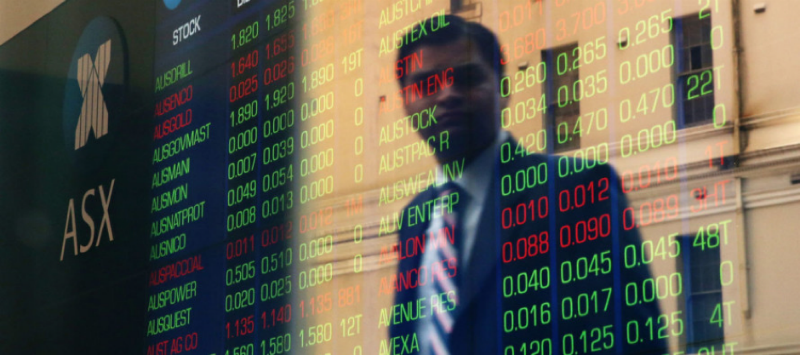
In 2005, ASX provided brokers the opportunity to trade anonymously. The initiative helped significantly increase the liquidity of securities - in particular, the stocks included in the Standard & Poor's / Australian Securities Exchange index, which account for more than three-quarters of the total market value.
Other recent ASX initiatives include the opening of a secondary market, similar to the London Alternative Investment Market (AIM) for companies with a market capitalization below AU $ 100 million (and there are two thirds of these on the Australian Stock Exchange).
Due to strong domestic influence, ASX is not interested in partnerships, mergers and acquisitions. Last year, the Australian Stock Exchange terminated an agreement with the Singapore Stock Exchange on cross-trading because of dissatisfaction with the size of costs. The agreement was signed in 2000, the transaction was perceived by experts as a “historical agreement” capable of increasing the liquidity of shares on ASX, but the cooperation did not meet expectations. ASX is now "keeping its distance", but it is closely following the economic development of countries in the Asia-Pacific region.
Habratopik on the topic: What are stock indices and why are they needed?
German Stock Exchange (Deutsche Börse)
The German stock exchange seeks to “differentiate itself” by creating a unique portfolio of services that covers the entire chain of exchange processes - trading in securities and derivatives, settling and closing deals, providing up-to-date market information, and developing and operating electronic trading systems. Thanks to an exchange-oriented business model, Deutsche Börse creates an efficient capital market: issuers benefit from low capital costs, and investors enjoy the benefits of high liquidity and low transaction costs.
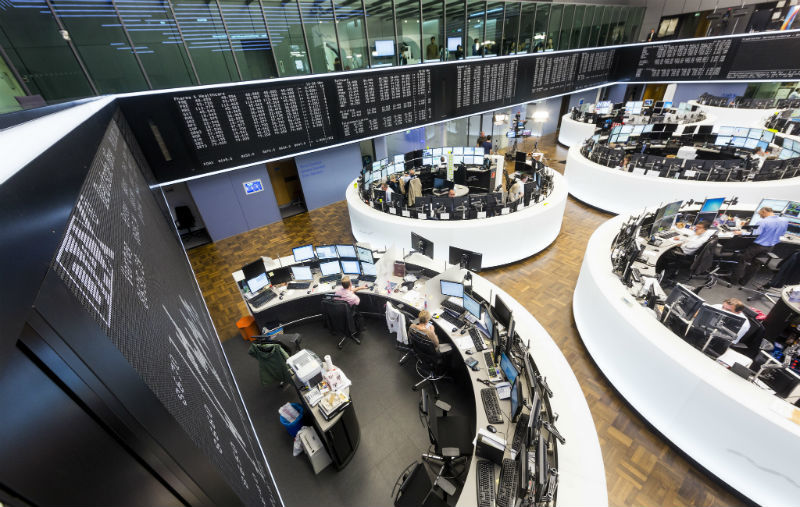
Among the priorities of Deutsche Börse are the development of the Xetra innovative trading platform and the Frankfurt Stock Exchange - completely “electronic” financial markets, ensuring the operation of Eurex (a subsidiary company that is one of the global stock market leaders in the field of entering and selling futures contracts and options) and supporting Clearstream (a subsidiary that provides integration of banking, depositary and settlement services for trading securities and stocks with fixed interest).
Habratopik on the topic: How we created a brokerage trading system
Euronext
The European stock exchange Euronext (now part of the world's largest stock exchange NYSE Euronext) was formed as a result of a massive merger of the stock exchanges of Amsterdam, Brussels and Paris, and subsequently expanded to the extent that it was able to include the Lisbon Stock Exchange, the London Derivatives Financial Derivatives.
Euronext was created with the aim of dividing the “spheres of influence” in Europe and joint control over the three original securities markets. Contrary to the agreement, Paris took the lead in most areas of Euronext. Now the exchange uses the original French electronic trading system. In addition, most major French privatizations take place at Euronext, for example, large-scale transactions such as the transfer to private companies of Electricité de France (EDF) in 2005, or Paris Airport (Aéroports de Paris) in 2006.
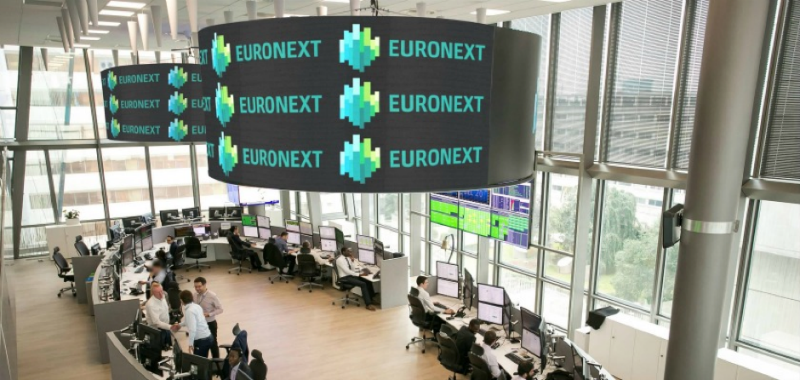
Euronext is looking for opportunities to reach the global level. So, in early 2005, the largest European stock exchange made an unsuccessful offer of cooperation to the London Stock Exchange. In 2007, the New York Stock Exchange (NYSE) and Euronext started talking about a merger, which, as expected, could have given Euronext more influence outside of Europe. The merger can be seen as a sign of the growing desire of Euronext to attract not only European companies to IPOs.
Euronext pursues a diversification and expansion strategy, adds new products and services and seeks to increase influence at the international level. Euronext analysts have developed a “Technology Improvement Program”, similar to the system operating on the London Stock Exchange. The new electronic platform will help Euronext significantly increase the speed and number of simultaneously performed sales.
Hong Kong Stock Exchange (The Hong Kong Stock Exchange, HKEX)

The Hong Kong Stock Exchange (HKEX) is inextricably linked with the rapidly developing Chinese economy. The main advantages of HKEX are its geographical proximity to mainland China, relatively mild corporate governance and the favor of the Chinese government, which is conducting privatization of state-owned enterprises here.
Chinese companies trust the Hong Kong Stock Exchange and prefer it to Western and American "competitors." Listing securities on the Hong Kong Stock Exchange is easier, cheaper and easier “culturally”. Standards for listing on HKEX are high, but the requirements for companies are not nearly as strict as in the USA, as the exchange management has repeatedly stated.
Currently, only securities of companies registered in Hong Kong, China, Bermuda or Cayman Islands can be listed on the stock exchange. However, the marketing strategy of the Hong Kong Stock Exchange involves changing the rules to include stocks of companies from other countries in the Asia-Pacific region (for example, from Australia) and reduce dependence on China.
London Stock Exchange (London Stock Exchange, LSE)
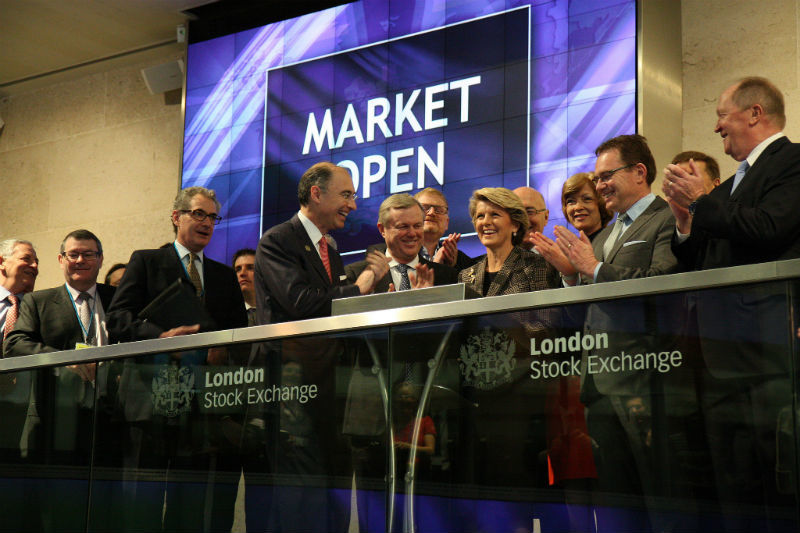
The London Stock Exchange spends a lot of money on the “Technology Road Map” - a large-scale program to modernize trading mechanisms. One of the last successful steps in this direction was the introduction of Infolect's storage and transmission of market data, which reduced the average transaction speed to two milliseconds (which is about 15 times less than previously required).
LSE CEO Clara Furse claims that increasing the speed of transactions allows the London Stock Exchange to remain competitive in the global financial market. In addition, the management of the stock exchange is seriously thinking about reducing the cost of using state-of-the-art technology for users.
Like the NYSE Euronext and the NASDAQ, the London Stock Exchange seeks to expand its influence in the world. The focus of the LSE is China, India and Russia. The strategy of attracting foreign companies to the listing procedure actually works: in 2006, several large Russian private enterprises placed their shares on the London Stock Exchange. The management of the exchange also decided to open an additional office in Hong Kong in October 2004 to compete in the struggle for Chinese business to US exchanges.
In 2011, the leadership of the NASDAQ OMX Group Inc considered the possibility of a merger between NASDAQ and the London Stock Exchange, but no agreement was reached.
NASDAQ
NASDAQ is the largest electronic stock exchange in the United States, judging by the number of closed securities transactions and the presence of companies that are leaders in their industry — for example, Microsoft, Intel, Google, Oracle, Nokia, K-Swiss, Carlsberg, Starbucks and Staples. Despite the fact that NASDAQ initially positioned itself as a “stock exchange for growing companies,” today you can meet one of the most demanding requirements for applicants to enter the stock exchange list.
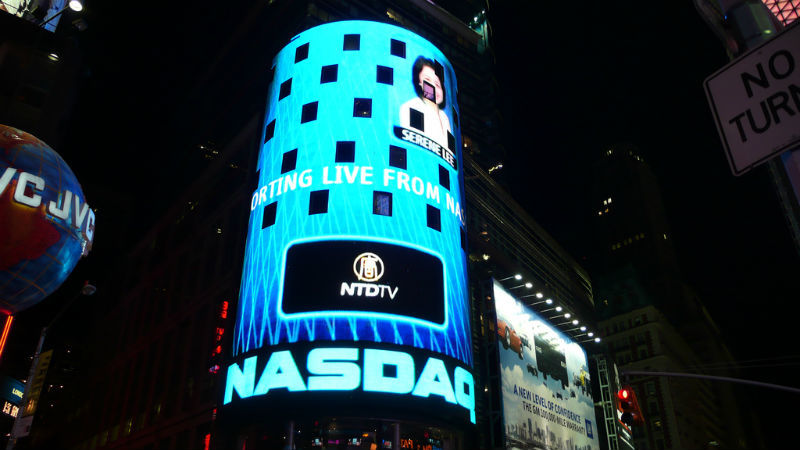
The world's first electronic stock market, NASDAQ sought to become a leader in the field of trading technology. The speed of making deals was reduced to a record minimum of one millisecond. In addition, the management of the electronic exchange has relied on the client "post-listing" service - helping companies interact with investors, risk management, corporate governance.
The NASDAQ is actively using the opportunities that have opened up as a result of the globalization of world capital markets. Thus, NASDAQ indices were licensed and actively used in 37 countries of the world.
After an unsuccessful attempt to merge with the London Stock Exchange, in 2007, for $ 3.7 billion, NASDAQ acquired its European competitor, the Swiss stock exchange concern OMX, gaining access to European markets. The current goal of the NASDAQ OMX Group is to enter the Chinese securities market.
New York Stock Exchange (NYSE Euronext)
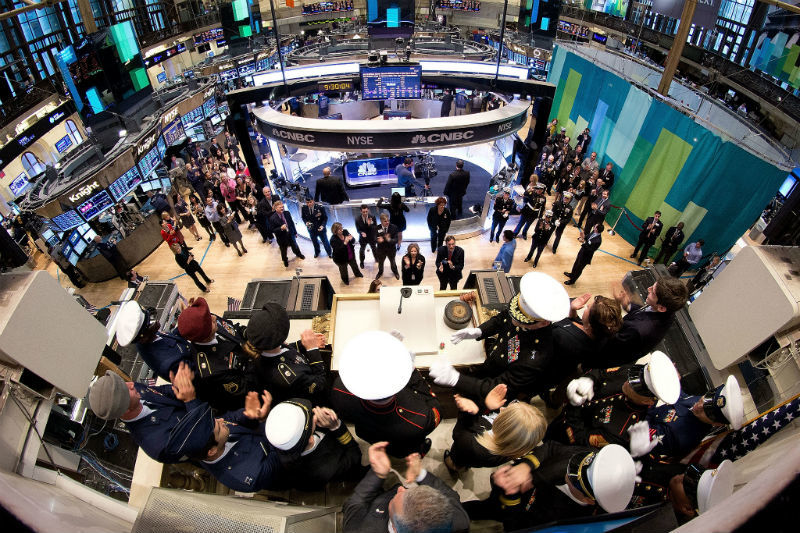
NYSE Euronext is positioning itself as the world leader among stock exchanges. The most liquid stocks, the highest listing standards and blue chips (the securities of the largest companies with a stable income) allow the New York Stock Exchange to maintain its lasting “golden” status.
Like all major stock exchanges in the world, NYSE Euronext seeks to expand its influence beyond the borders of the “native” US and overcome the competition of local exchanges that have grown over the past few years in large metropolitan areas (for example, in Milan or Mumbai).
In order to gain access to shares of companies outside the United States, in June 2005, the New York Stock Exchange made a proposal to merge Euronext - one of the largest stock exchanges in Europe. The merger, which was approved by Euronext shareholders, entered into force in the first quarter of 2007 and allowed for the first time to create an “intercontinental” securities market, and the total value of listed companies was about € 21 trillion ($ 26 trillion).
The NYSE Euronext covers more time zones than any other exchange, and uses two currencies at once - the dollar and the euro - which greatly facilitates securities transactions for investors.
In pursuit of globalization and expansion, in January 2007, NYSE Euronext announced the creation of a strategic alliance with the Tokyo Stock Exchange. The CEO of the New York Stock Exchange, John Thein, said that cooperation with Japanese colleagues will help create "the world's first truly global securities market." In addition, NYSE Euronext has opened offices in Hong Kong, London and Tokyo and is expanding its presence in China.
Singapore Stock Exchange (SGX)
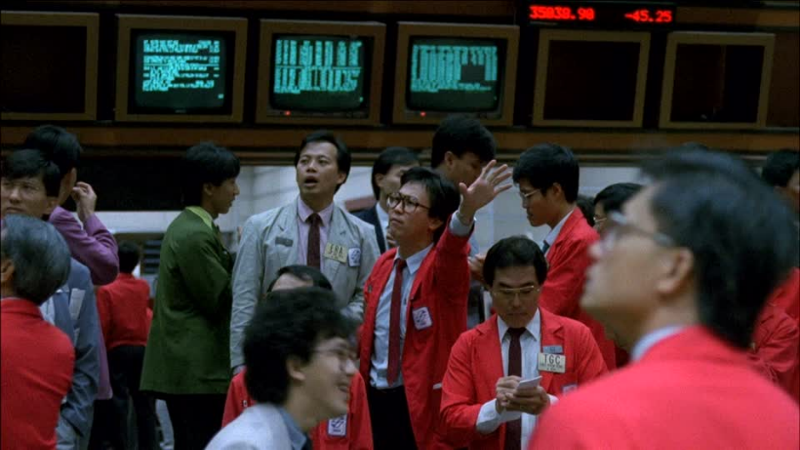
The Singapore Stock Exchange has gained a niche in the Asian securities market. Here are the largest companies from the countries of the Asia-Pacific region (except for Japanese, Korean and state-owned Chinese enterprises that prefer to put their shares up for sale on the domestic stock exchanges). SGX is an extremely attractive trading platform for countries that do not have “globally” recognized exchanges. In addition, the Singapore Stock Exchange succeeded in attracting private Chinese capital.
In order to maintain its competitive advantage, the Singapore Stock Exchange seeks cooperation with smaller regional exchanges and, thus, expands its global network of trading platforms. In mid-January 2007, SGX was the only Asian exchange that officially announced its desire to acquire a 26% stake in the Bombay Stock Exchange. The other three exchanges claiming the Bombay shares - NASDAQ, the London Stock Exchange and Deutsche Börse - are based in North America and Europe.
The second major initiative of the Singapore Stock Exchange was an agreement with the Abu Dhabi Securities Market - the Abu Dhabi securities market. The details of the agreement were not disclosed, but it was primarily about the simplification of international trade mechanisms. Similar negotiations were conducted with the Malaysian Stock Exchange and the Chicago Mercantile Exchange.
Japan Exchange Group, Inc. [
The Japanese stock exchange is committed to regional leadership and competition in the global market and positions itself as a “prestigious place to place securities.” The essential advantages of Japan Exchange are the sale of securities with high liquidity and the introduction of state-of-the-art information technologies into the trading process.
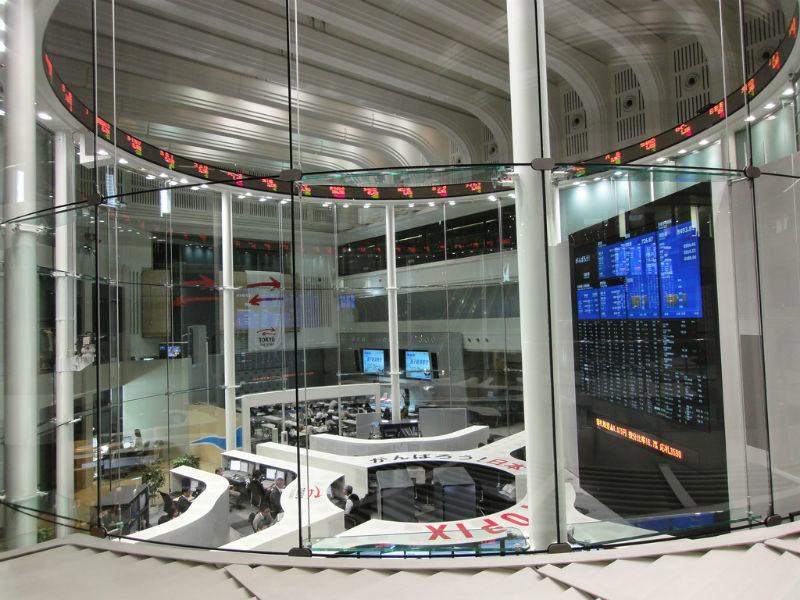
The exchange is a member of the Federation of Asian and Oceanian Stock Exchanges. The Japan Exchange Group, Inc. was the result of a 2012 merger between the Tokyo Stock Exchange and the Osaka Stock Exchange. Prior to this, the Tokyo Stock Exchange was the main player in the Japanese stock market (it swallowed Osaka).
Moscow Exchange
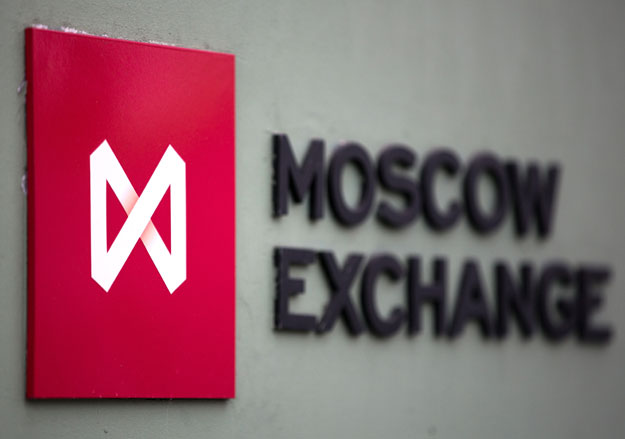
The Moscow Exchange was formed in December 2011 as a result of the merger of two main Russian stock exchange groups - MICEX and RTS. The exchange structure that emerged as a result of the merger received the opportunity to trade in all major categories of assets.
At the moment, the Moscow Stock Exchange is the largest stock exchange in Russia and Eastern Europe. The audit company Ernst & Young did not include the domestic exchange holding in its review, but the Moscow Exchange seeks to increase its influence in the international arena. “We want to become an international center for attracting capital, so that settlements and pricing with Russian assets are carried out in Moscow. To make the infrastructure leading in the region. Open to issuers and market participants from other countries, ”said Alexander Afanasyev, chairman of the board of directors of the IB, as part of the online conference“ Shareholder Day ”. The expert noted that the share of accounts from South-East Asia and the Middle East on the Moscow Stock Exchange "has increased significantly." Moscow Exchange seeks to increase its influence in these regions.
In addition, the share of post-trading services is increasing on the Moscow Stock Exchange, which, in the opinion of the management, may attract new issuers and investors. Armed with the experience of American competitors, MB started providing risk management services and delivering business information to investors. Modernization of trading mechanisms is underway, the speed of transactions in the derivatives market is increasing .
You can start working on the Moscow Exchange with the help of ITinvest .
Other materials on the topic from ITinvest :
- IT-vacancies from ITinvest ( Matrix trading system administrator, QORT administrator , lead programmer );
- Online Trading: How to become a developer of systems for trading on the exchange
- What a programmer should be able to get a job in finance
- How to recognize a person's emotions in his face: A test for employees of financial companies
- The conditions under which the financiers work: A tour of the offices of Goldman Sachs and Bloomberg
Source: https://habr.com/ru/post/306106/
All Articles